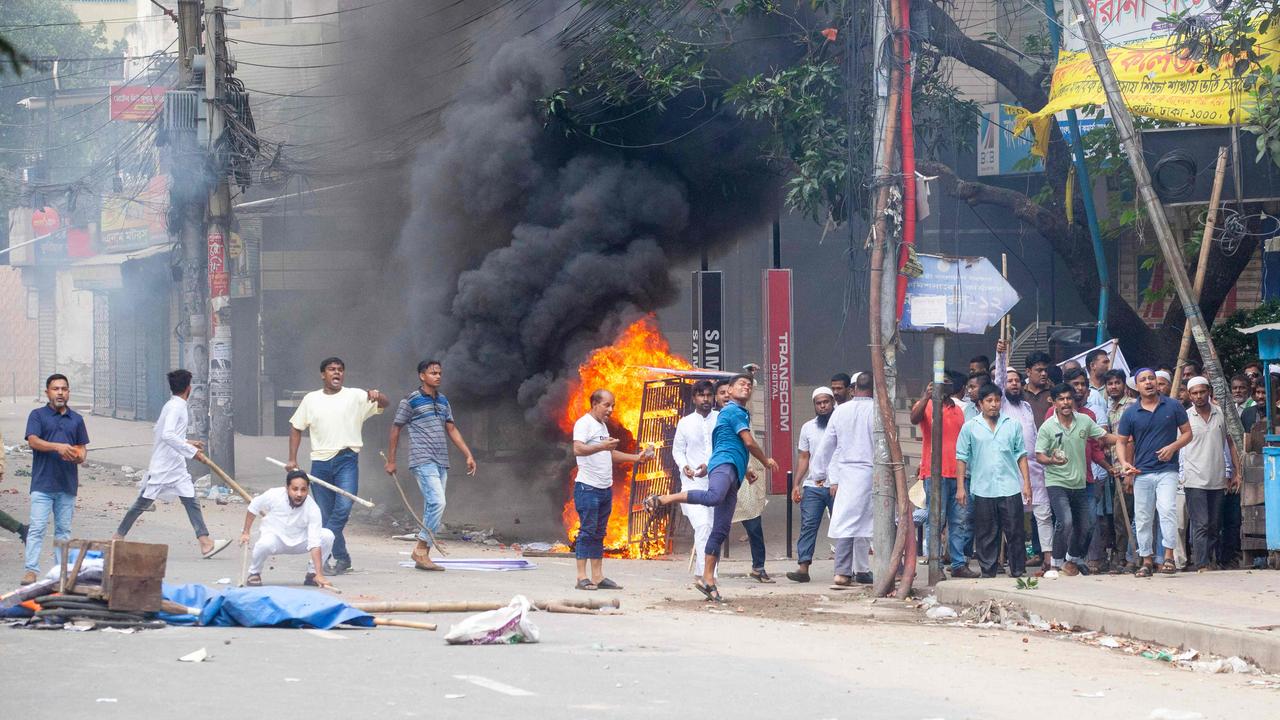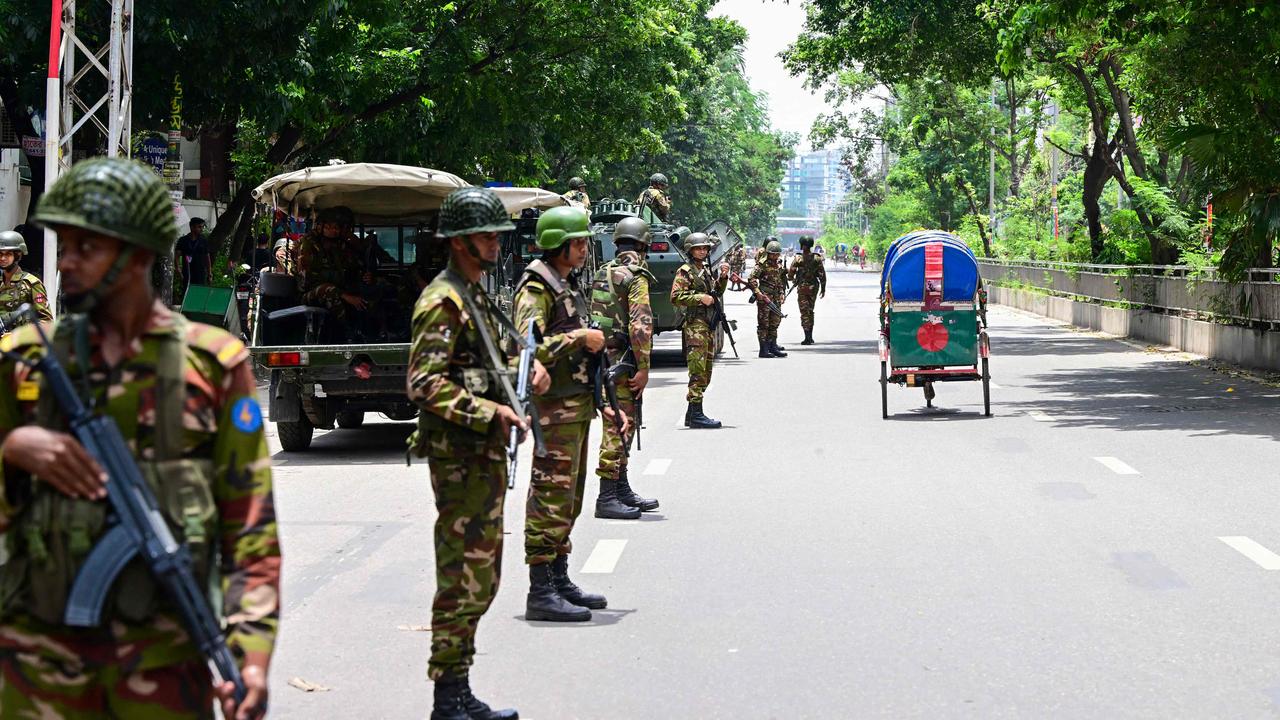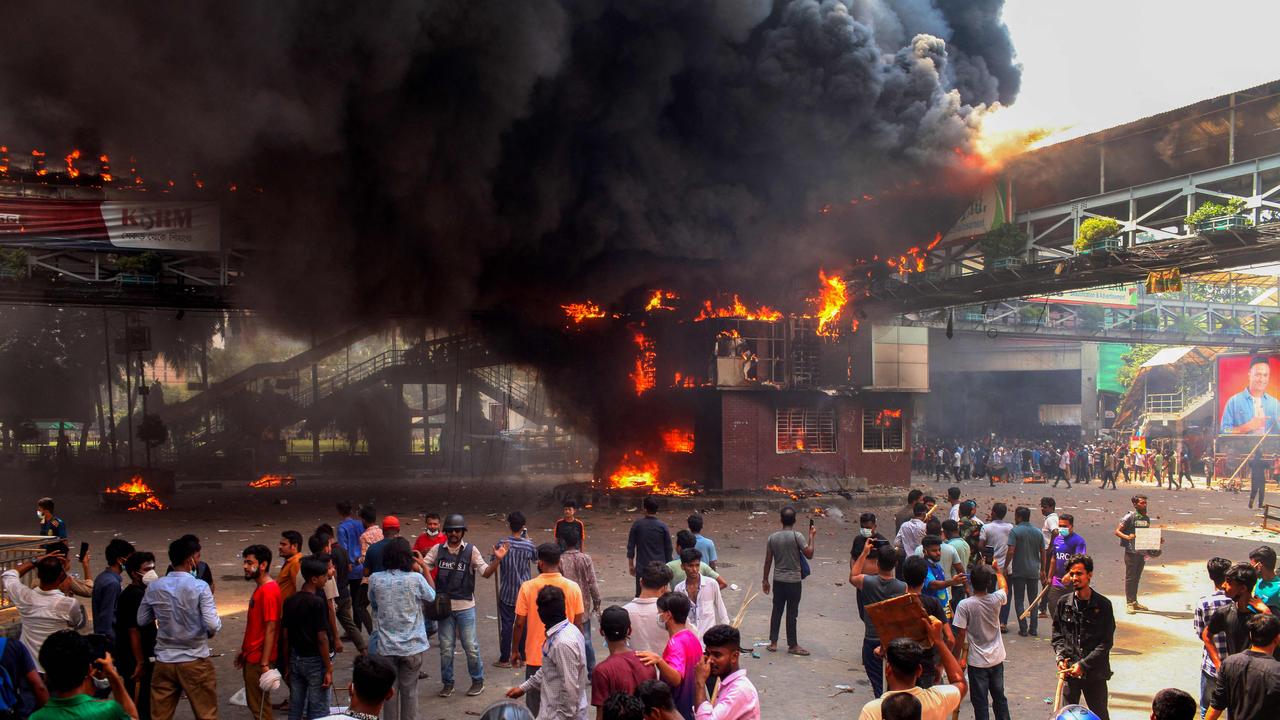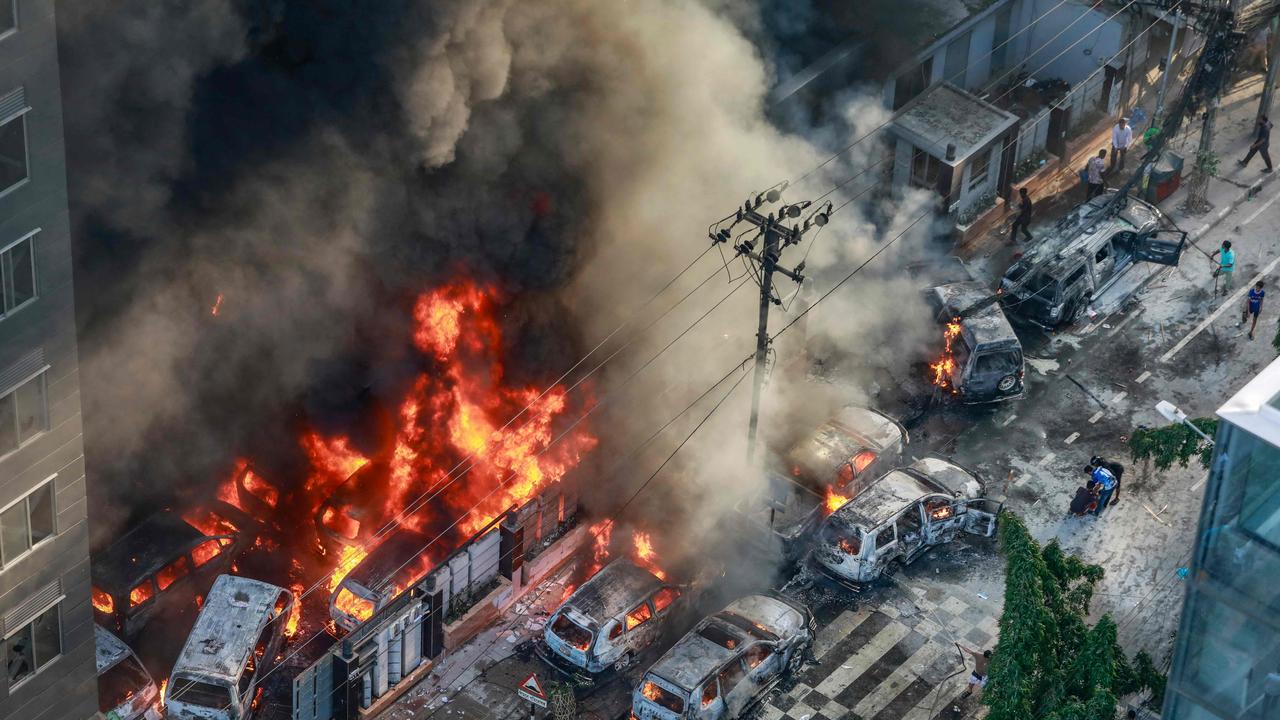186 dead, 170 million in social media blackout as violent student protests rock nation
At least 186 people are dead and 170 million are in a mobile internet and social media blackout amid deadly clashes. Warning: Graphic
At least 186 people have been killed in frightening violence in Bangladesh as students protest against what they say is an unfair quota system for sought-after government jobs.
Most Bangladeshis remain without mobile internet after it was cut off last week and a nationwide curfew remains despite easing this week to allow some commerce to resume like factories, offices and banks.
Violent clashes between students and police and counter-protesters in support of the ruling political party Awami League have led mass deaths, according to international news agency AFP, reporting from Dhaka. Many more have been injured.


Students in the South Asian nation are protesting against a quota system for jobs in the civil service, which are sought-after because they are stable and well-paid.
They say the system – which reserved more than half of the government jobs for specific groups, including 30 per cent for children of veterans who fought in the country’s 1971 liberation war against Pakistan – favours allies of Prime Minister Sheikh Hasina’s government.
Students instead want a system based on merit.
The quota rules were introduced in 1972 by independence leader Sheikh Mujibur Rahman, who is the father of current Ms Hasina.

Protests by students in 2018 prompted Ms Hasina’s administration to cut down the quota scheme, but last month the High Court ruled this change had been unlawful and ordered the government to reintroduce the freedom fighter category it had abolished.
Following the out-of-control violence last week, the Supreme Court this week agreed to scrap most quotas and ruled 93 per cent of jobs should be filled on merit.
But fury remains over the handling of the situation, including the arrest and death of students while protesting.
Rights group Amnesty International said video and photographic evidence from clashes showed that Bangladeshi security forces had used unlawful force.
Police have arrested at least 2500 people since the violence began last week.

Student protesters claim they were peaceful before individuals from the Bangladesh Chhatra League, a group affiliated with Awami League, started attacking them at Dhaka University on July 15.
Ms Hasina gave a national address in an attempt to calm the violence last week, saying she condemned every “murder”.
“I firmly declare that those who carried out murders, looting and violence – whoever they are – I will make sure they will be given the appropriate punishment,” Ms Hasina said.
But a day later, Bangladeshi students set fire to the head office of the state-run Bangladesh Television (BTV), which aired the speech.
Police had fired rubber bullets at hundreds of protesters, but they fought back and chased retreating officers to the headquarters of the broadcaster in the capital of Dhaka.

They also attacked a gallery with about 150 portraits of Sheikh Mujibur Rahman.
“This is a war zone,” Bangladeshi information minister Mohammad Ali Arafat told reporters invited by the government and BTV to survey the destruction on Wednesday.
He gestured to oil paintings of Mr Rahman strewn on the ground, disfigured by knives used to stab through the leader’s face.
“Does this look like a peaceful protest to you?”

Since Ms Hasina took office a second time in 2009, Mr Rahman’s image has appeared on every banknote and in hundreds of public murals across the South Asian nation of 170 million people.
Portraits such as those in BTV’s Dhaka headquarters are not only commonplace, but a legal requirement: Ms Hasina’s government changed the constitution to require that they be hung in every school, government office and diplomatic mission.
During Ms Hasina’s speech on BTV last week, several portraits of her father hung around her office appeared on the broadcast.


London-based internet monitor NetBlocks said on X, formerly Twitter, there was “partial restoration of fixed line internet connectivity in Bangladesh after five full days offline”.
However, social media and mobile data restrictions continue.
“For now, all social media will remain shut,” junior Technology Minister Zunaid Ahmed Palak said.
It is understood this is to prevent students from communicating and organising protest activities.
âš Update: Metrics show a partial restoration of fixed-line internet connectivity in #Bangladesh after five full days offline; social media and mobile data restrictions continue, limiting the public's right to communicate and stay informed as over 170 deaths reported at protests pic.twitter.com/gJ7szpXLLA
— NetBlocks (@netblocks) July 23, 2024
A professor, who is based in London but has a focus on Bangladesh, said she tried to call 10 different people and only got through to one, suggesting phone lines were down or jammed.
Students halt protests
The student group that led this month’s protests has suspended demonstrations until at least Friday, with one leader saying they had not wanted reform “at the expense of so much blood”.
Information Minister Mohammad Ali Arafat said the deaths were “unfortunate”.
“We are shocked,” Mr Arafat said.
“We express our deep condolences to the family members, those who lost their near and dear ones.”
He said a judicial probe announced on Sunday would examine how the protests began and mete out justice for those who committed acts of violence, “regardless who is involved”.
– with AFP






